Continuing with the design of a Koni 2812, next up with the lower eye
Dimensions can be found here:
Koni 2812
Drawing says that the eye has a radius of 16mm
Pad it
Top of the eye is 18mm away from the center
Pad
Eye is 11.3mm thick
Pocket it
Pocket for the spherical plain bearing
Put a big circle on the bottom of this part
Pad it
Fillet it
Create a profile to pocket it
Groove the part 180 degrees
Pocket it
Switch to the generative shape design workbench and make the sketch symmetrical
Use this symmetry to pocket the other side
Damper body
We know the distance from the center of the eye to the bottom of the thread, but the drawing does not indicate the distance from the bottom of the eye to the tubular bottom of the damper body. It's going to be a 1:20 scale model. I'll guess. Damper body outer diameter is 45 mm. That we know.
Shaft
Fillets and Chamfers
Damper body has a outer diameter of 45mm, I don't know the length. This damper comes in many different lengths. I'm going to go with this reference photo and make it 175mm from the bottom of the eye to the top of the damper body.
First pad at 200mm, I'll trim it down later
Fillet
Thread. I'm going to make a visible thread. This is contrary to typical usage in CATIA. Imagine the computer resources to create a visual of a model with hundreds of screws if each of them had a visible thread. Normally if a thread was required, I'd just use the thread/tap button in the part design workbench. This is a unique part where the thread is a recongnizable feature.
Which thread? Metric, many of the measurements of this shock are metric. Plus it's made in Holland. It's definately going to be fine pitch, if not super fine or extra fine.
These are some useful resources:
Fine metric threads
Wikipedia
Drawing says Tr48x2, so let's say that is standard M48x2.0
Create a new Body, so we can hide this if it's too graphic intensive for the computer
First thing I need is a starting point
And I'll need a profile
Copy and paste this, I need another profile at the top note the formula, this ensures that as we change the height of the damper body shaft, the thread changes with it.
Now we need a helix
Change to the generative shape design workbench. Create an infinite line through the origin point.
Create a helix with a 2mm pitch
Go back to the part design workbench. We'll create a multi-sections solid using our two profiles with the helix as a SPLINE.
Beautiful. Chop 2mm off the top and the bottom
Lovely, it's threaded
Let's give it that dirty anodized aluminum finish
So consulting my reference photos it looks like BMS Scuderia Italia probably put ever damper in the Koni Racing catalog onto this car at one point or another. All I've got is shots from the factory, so it's going to be really hard to determine which dampers were used at which races. None of them seem to match the technical drawings. I'm designing a model car, so I'm going to be terribly capricious and design one incorporating the most important features I see that I like looking at.
Just a quick assembly, and that's all I'm going to get to today.
Wednesday, November 16, 2011
Subscribe to:
Post Comments (Atom)















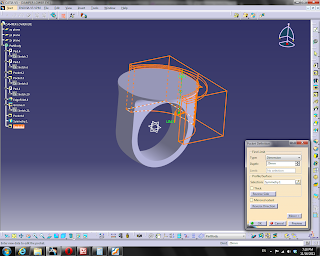


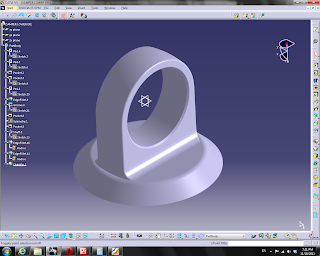





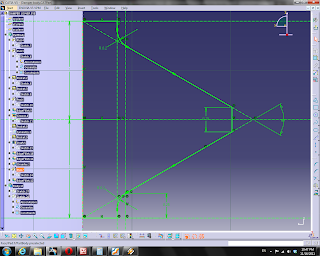
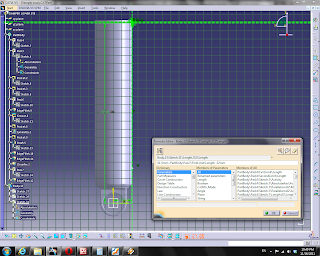





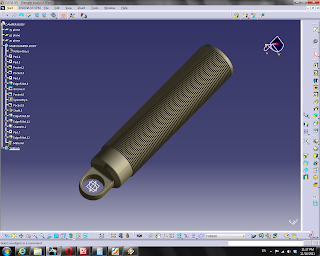


No comments:
Post a Comment